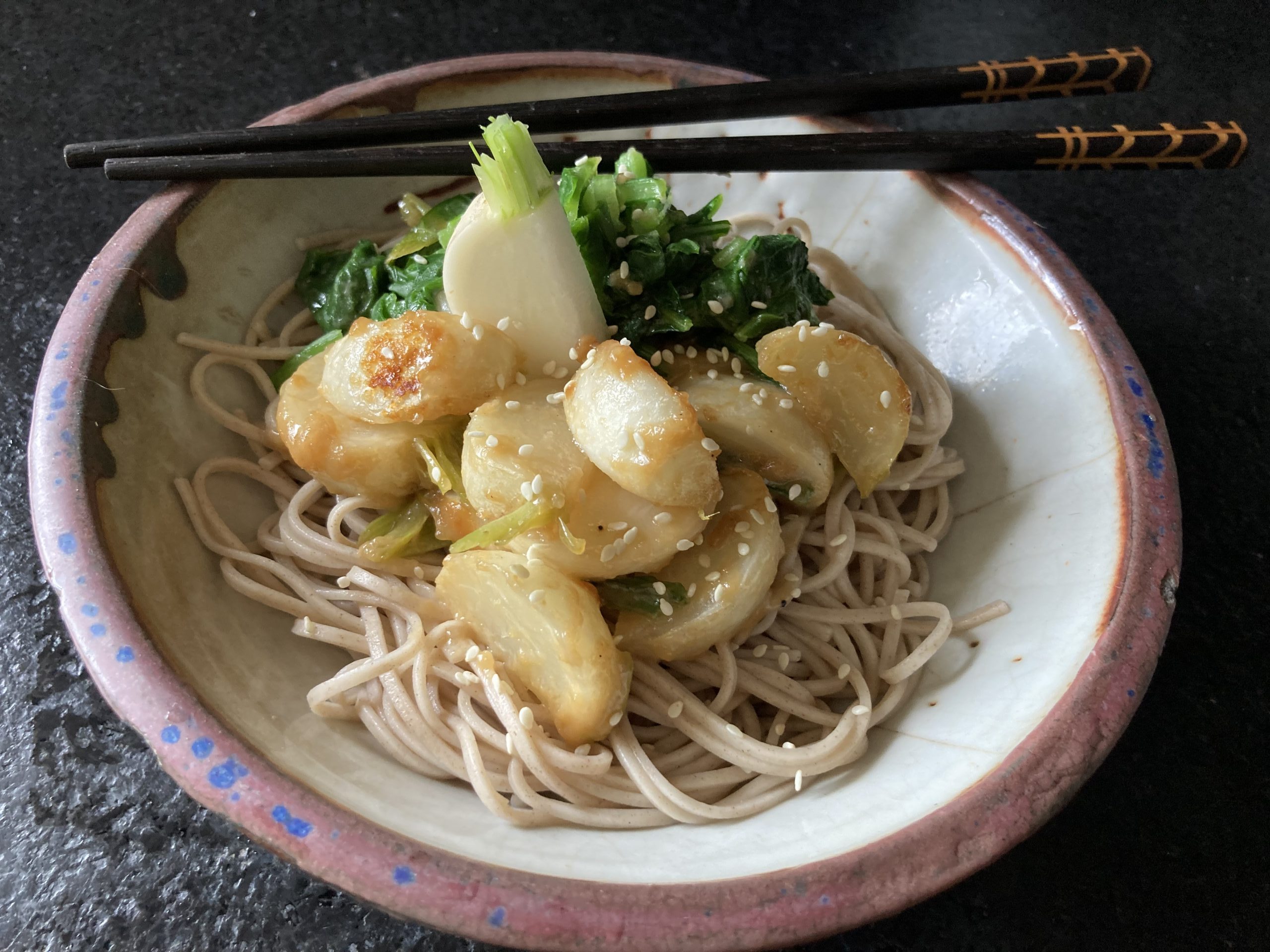
My, my, Hakurei
The first farmers market of the season was as glorious and informative as I’ve come to expect. The spring sunshine illuminated tree buds and baby plants, along with sections of skin that had been hidden for months, giving a vibrant glow to all it touched. I learned who died, who reproduced, who got an elk, and other important life events. And I had the opportunity to burnish my own response to the question, “how was your winter?”
There were plant starts galore, spring greens, well kept storage crops from last fall, and the usual unfortunate items — booze, waffles, cotton candy — that have nothing to do with plants or farms, yet still attract most of the business. After battling my way through a latte-fueled queue of waffle buyers, I asked Mr. Lemeza if he had any beets left. Leneza waved away the question. “Only for borscht,” he said, dismissively, of the dregs of last year’s crop which he left at home.
I left with some tomato starts, bunches of black kale and Hakurei turnips, a sourdough baguette, a bag of rock-hard shallots, and some fresh hummus made from sprouted chickpeas (the recipe for which I am currently reverse-engineering in the lab). I used kale leaves to spread the hummus on the baguette, and then ate the leaves, making for a complete meal. Then I planted my tomatoes alongside the sunflowers that have already sprouted in the tomato patch. Soon their clingy tomato arms will fasten to the sticky bristles of the sunflower stalks, and get drug up skyward. With all business in the garden concluded, I turned my focus to those Hakurei turnips.
Also known as the Tokyo Turnip, the Hakurei — pronounced like Samurai — was developed in the 1950s, when Japan was desperate to feed itself after World War II. Hakurei translates to “esteemed companion,” a name that, like “salad turnip” is entirely appropriate. The entire plant is edible, from green tip to root tip. It grows fast – maturing in about a month – and can handle a light frost and other forms of adversity. And it boasts culinary properties that were previously unheard of in turnip country, earning it the nickname, “caviar of turnips.”
Its flavor is so un-turnip-like that calling the Hakurei a turnip is like pointing out that a jalapeno is technically a fruit. It’s a cool party trick, but so what? We all know a jalapeno isn’t really a fruit because it doesn’t taste like one. The Hakurei, meanwhile, almost does.
You don’t even need to peel its delicate skin. Just bite into it like an apple, or the way Mr. Lemeza bites into a fresh beet. Each nibble of Hakurei is like a sip of sweet, buttery water, with a hint of horseradish.
They are great in salads for their crisp, juicy texture and mild flavor which goes nicely with vinegar. But you can definitely cook these so-called salad turnips. Some people add them to the jus in the final half hour of roasting meat. The whiff of bitter spice in its mild flavor makes it a great accompaniment to fatty proteins.
My favorite way to prepare the Tokyo turnip is in a white miso butter with garlic, along with white wine and a pinch of sugar. White miso has a sweet and gentle flavor that vibes with the turnips.
Hakurei Turnips in Miso Butter Glaze
This simple dish comes together quickly. And sweetly, thanks to the turnip itself, and the dash of sugar that goes so well with white miso and butter. The sweetness is balanced by a hint of turnip-y bitterness, which keeps the sweetness in check.
Two servings
1 bunch of Hakurei turnips – there should be about 6-8 in a bunch
2 tablespoons butter
1 teaspoon sugar
1 tablespoon miso
¼ cup vermouth or white wine or rice vinegar
2 cloves of garlic, smashed and chopped coarsely
1 tablespoon sesame seeds
Salt
Trim the thin, spindly taproot that extends from the bottom of each turnip. Cut the stems about half and inch above the turnip and chop the stems and leaves. Cut the turnips into slices, which cook faster and absorb more glaze, or quarters, which look prettier. No need to peel them.
Add the butter, miso, sugar and a cup of water to a pan. Turn the heat to medium and stir as it heats. When it reaches a simmer, add the vermouth and garlic, and then the turnips. Allow the liquid to cook down and thicken, about ten minutes. Season with salt if necessary – the miso may contribute enough. Flip the pieces and turn the heat down to low, so the turnips can brown but not burn. Garnish with sesame seeds, and serve with soba noodles or rice.